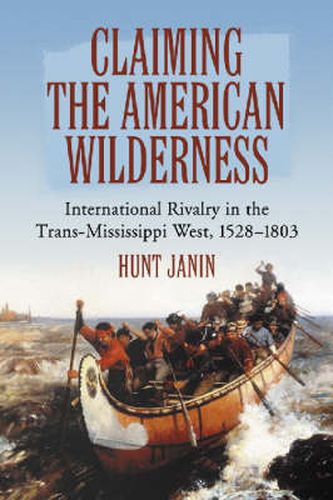Readings Newsletter
Become a Readings Member to make your shopping experience even easier.
Sign in or sign up for free!
You’re not far away from qualifying for FREE standard shipping within Australia
You’ve qualified for FREE standard shipping within Australia
The cart is loading…






This title is printed to order. This book may have been self-published. If so, we cannot guarantee the quality of the content. In the main most books will have gone through the editing process however some may not. We therefore suggest that you be aware of this before ordering this book. If in doubt check either the author or publisher’s details as we are unable to accept any returns unless they are faulty. Please contact us if you have any questions.
In the early sixteenth century, as voyages across the Atlantic became more feasible and consequently more frequent, international competition for possession of the New World intensified. Occupied by numerous Indian tribes, western North America was home to vast natural resources, alleged riches and a fabled waterway that would connect the Mississippi with the Pacific Ocean. Over the next two centuries, Spanish, French, British, Russian and American explorers flocked to the Trans-Mississippi West, competing with each other, as well as the native Indian groups for possession of the western half of the continent. Beginning with the 1528 shipwreck of Spanish conquistador Cabeza de Voca and ending with the negotiation of the Louisiana Purchase in 1803, this volume presents a broadly based general survey of the events which took place in the Trans-Mississippi West during the sixteenth, seventeenth and eighteenth centuries. The book focuses on the international rivalries west of the Mississippi and the resulting intense military and commercial competition. Using a prismatic rather than chronological approach, the work examines six distinct groups - Native American Indians, Spanish, French, British, Russians and Americans - and the objectives of each with regard to the Trans-Mississippi West. Sources include contemporary journals of explorers, such as Lewis and Clark. An epilogue evaluates the success of the respective quests, while a brief chronology at the end of the text serves to orient the reader. Appendices address eight related topics, including the Lewis and Clark expedition, firearms on the early frontier, and the coming of the horse.
$9.00 standard shipping within Australia
FREE standard shipping within Australia for orders over $100.00
Express & International shipping calculated at checkout
This title is printed to order. This book may have been self-published. If so, we cannot guarantee the quality of the content. In the main most books will have gone through the editing process however some may not. We therefore suggest that you be aware of this before ordering this book. If in doubt check either the author or publisher’s details as we are unable to accept any returns unless they are faulty. Please contact us if you have any questions.
In the early sixteenth century, as voyages across the Atlantic became more feasible and consequently more frequent, international competition for possession of the New World intensified. Occupied by numerous Indian tribes, western North America was home to vast natural resources, alleged riches and a fabled waterway that would connect the Mississippi with the Pacific Ocean. Over the next two centuries, Spanish, French, British, Russian and American explorers flocked to the Trans-Mississippi West, competing with each other, as well as the native Indian groups for possession of the western half of the continent. Beginning with the 1528 shipwreck of Spanish conquistador Cabeza de Voca and ending with the negotiation of the Louisiana Purchase in 1803, this volume presents a broadly based general survey of the events which took place in the Trans-Mississippi West during the sixteenth, seventeenth and eighteenth centuries. The book focuses on the international rivalries west of the Mississippi and the resulting intense military and commercial competition. Using a prismatic rather than chronological approach, the work examines six distinct groups - Native American Indians, Spanish, French, British, Russians and Americans - and the objectives of each with regard to the Trans-Mississippi West. Sources include contemporary journals of explorers, such as Lewis and Clark. An epilogue evaluates the success of the respective quests, while a brief chronology at the end of the text serves to orient the reader. Appendices address eight related topics, including the Lewis and Clark expedition, firearms on the early frontier, and the coming of the horse.